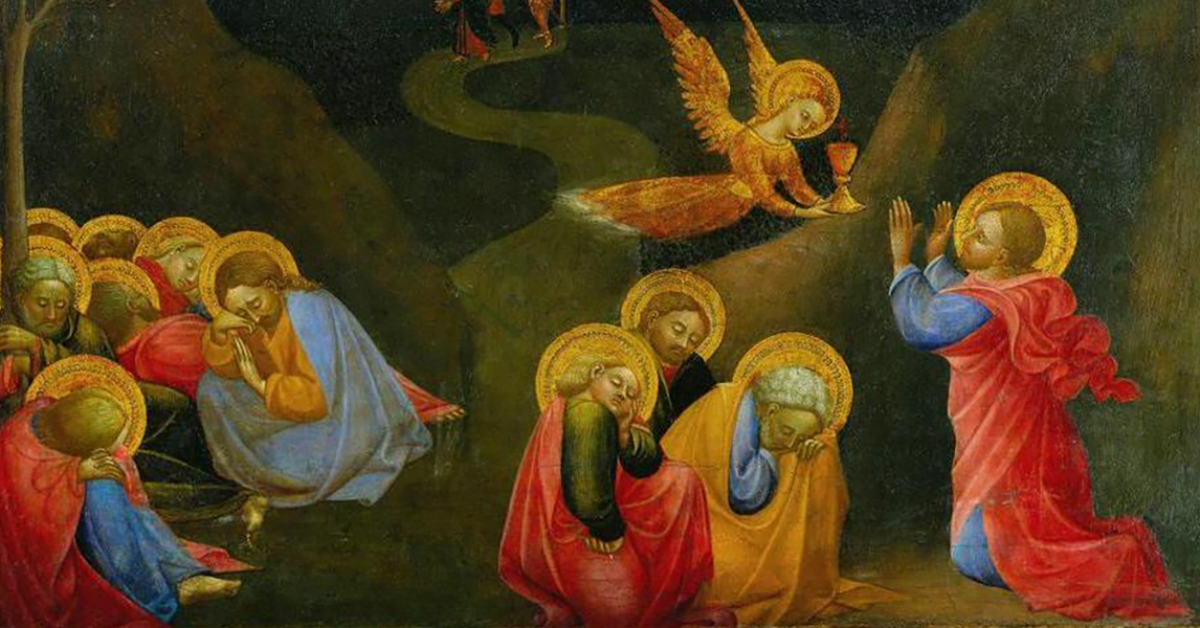The Practice of Prayer
Prepare to Be Baptized Series
Last week Kent Burreson introduced this four-week series on the intentional period of preparation during Lent for those who will be baptized, confirmed, or reaffirm their faith at the Easter Vigil. The place of prayer in the life of a Christian is highlighted in the Gospel text for Ash Wednesday, Matthew 6:1-6, 16-21. In this section on the Sermon of the Mount, Jesus teaches about three practices central for first-century Jews: almsgiving, prayer, and fasting, thus opening the way for this time of preparation during Lent to focus on prayer.
Christians, whether children or adults, learn to pray by participating in prayer. We witness this formation of children on Sunday mornings at the end of the children’s sermon, when the leader invites the children to “fold your hands and bow your heads,” and then begins to prayer: “Dear Jesus…” The children and adults in the pews repeat “Dear Jesus …”, and then repeat each brief phrase of the leader’s prayer.
A couple in the adult faith formation process at one of our research congregations in suburban Chicago commented that the midweek Lenten services had made an impact on their young son, who sang some of the Taize songs “over and over, louder and louder” at home. The one he continues to sing, “Jesus, Remember Me,” introduced the practice of prayer into their home.
An effective adult faith formation process will also incorporate participatory prayer within the regular gatherings. At another of our research congregations, lay catechist Pearl described for me the practice of prayer to close the weekly gatherings of the congregation’s adult faith formation process. The small group, ranging in size from four to seven people, would stand, form a circle, and hold hands. As directed by the lay catechist, who started the prayer and thus modeled simplicity and brevity to others, each person would pray for the person to their right (or left—depending on the week) either aloud or silently. Week after week, one young man, who rarely participated in the group discussion, also kept silent during this closing time of prayer—until one gathering during Lent, during this more intentional time of preparation. Pearl described her reaction, saying, “And when Stanley prayed out loud, I nearly fell on the floor.” Stanley’s formation in prayer was participatory from the beginning. He joined the circle; he held hands with other members. Hearing Pearl lead each week and hearing the intercessions offered for one another by others in the group, Stanley learned how to pray and finally had the courage to join fully. What a powerful example of the work of the Holy Spirit!
Here are a few resources about prayer, corporate and personal, with information that may be helpful as congregations think about ways of practicing prayer and teaching about prayer:
- Harrison, Matthew C. Why Am I Joyfully Lutheran? CPH, 2018. See especially the appendix, “Luther on How to Meditate on God’s Word” (pp. 228-230). Harrison writes, Luther’s “method anchors prayer in the texts of Scripture or the catechism but allows the Holy Spirit to prompt thoughts via the Word, which may be chased more freely by the mind at prayer.” A brief and wonderful guide for personal prayer.
- Johnson, Donald W. Praying the Catechism. A “revised and expanded edition” is available through Augsburg Fortress. Originally written for an adult faith formation process of the ELCIC, “This devotional book is an attempt to help restore the Catechism into the prayer room” (4, second edition). Each of the 40 meditations follows the same pattern set forth by Luther that Harrison summarizes and could serve as a good resource for leaders.
- Harmon, Kathleen. Becoming the Psalms: A Spirituality of Singing and Praying the Psalms. Liturgical Press, 2015. A brief and accessible book that can inform the study of psalms and the role of psalms in corporate worship. Harmon writes, “This book … delves into the phenomenon of what it means for us as the church to pray the psalms, why we must pray these texts, and who we become as we do so” (viii).
- Duckworth, Jessicah Krey. Wide Welcome: How the Unsettling Presence of Newcomers Can Save the Church. Fortress Press, 2013. Duckworth declares “Discipleship is learned through participation in congregational practices such as Bible study, prayer, worship, care for one another, service toward neighbor, and many others” (3). Chapter 3, Facilitating Newcomer Participation, may be of particular interest to those who wish to explore the value of participatory learning.
++++++++++++++++
About the Image
Artist: Stefano di Giovanni (1392-1450), aka, il Sassetta
Title: The Agony in the Garden; part of St. Francis Altarpiece (backside) https://www.wikidata.org/wiki/Q21121938
Tempera, silver, and gold lead on poplar panel
Detroit Institute of Arts
This is a faithful photographic reproduction of a two-dimensional, public domain work of art.
This work is in the public domain in its country of origin and other countries and areas where the copyright term is the author’s life plus 100 years or fewer.
